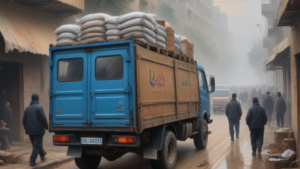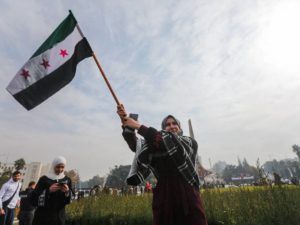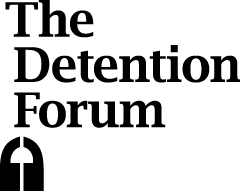Deprivation – lack of adequate access to food, shelter, health care, education, and other such fundamentals – is not a new phenomenon in Afghanistan given decades of turbulent and unaccountable governance, warfare, and deep-seated gender discrimination. The political and morally questionable decision of the US and various European governments to deprive Afghans of a functioning economy continues to pose major life-threatening repercussions for much of the population. Significantly, this includes all the women and girls whose marginalization is compounded by the poverty and misery that exacerbates their vulnerability, socially and economically.
Western countries arbitrarily seized US$9.1 billion of Afghanistan’s external reserves in 2021; this means that Da Afghanistan Bank (DAB),the central bank, is not able to access these assets to the continued detriment of the economy and banking system. United Against Inhumanity calls for an end to the US-led policy and mindset that has throttled the economy given Western antipathy to the Taliban regime even though this penalizes and impoverishes regular Afghan citizens. It is a policy that amounts to collective punishment.

No Alternative to a Functioning Economy
Mounting evidence shows that millions of Afghans are struggling to survive in ever more dire circumstances. Some 23 million Afghans – more than half the population – have acute humanitarian needs. A staggering 6.3 million Afghans are trapped in protracted displacement while Pakistan and Iran forcibly returned close to 1 million Afghans in 2023. Children who make up 49% of the Afghan population are frequently hungry; according to ‘Save the Children’, an NGO working in Afghanistan, 7.8 million children risk acute food insecurity this winter. Given drastic reductions in international aid last year – the UK cut its Afghan aid budget by 76%; Germany slashed its support by 93% – the health care system is greatly degraded with reduced support, for example, for pregnant women in a country with maternal and child mortality rates amongst the highest in the world.
Since the poorly planned withdrawal of US and allied forces in 2021, the Afghan economy and banking sector have struggled with the effects of the unilateral and high-handed appropriation of the country’s foreign reserves shortly after the return of the Taliban to Kabul in August 2021. A few months later, in February 2022, the Biden Administration issued an Executive Order that formalized the seizure of the US$7 billion of Afghan assets held in US banks. Half of this amount remains subject to ongoing US judicial proceedings further to compensation claims by 9/11 victims and their families. In September 2022, Washington transferred US$3.5 billion to a dedicated ‘Fund for the Afghan People’, a non-profit Foundation in Switzerland. It has a four-person Board of Trustees tasked with ‘protecting, preserving and disbursing’ these funds ‘for the benefit of the Afghan people’. Some US$2.1 billion is held in different banks in Europe.
Eighteen months, however, since the establishment of the Afghan Fund in Switzerland (AFS), there has been no movement to return any of these frozen funds to the DAB. In a Board meeting, at the end of January 2024, the AFS Trustees decided to pay Afghanistan’s outstanding arrears to the Asian Development Bank, a move that, in principle, will release funding for some infrastructure projects in Afghanistan. However, it raises concerns that this payment opens the door for other expenditures that are not in line with the rules and regulations of the DAB. It also risks delaying the measures that the Taliban have committed to undertaking such as anti-money laundering (AML) and anti-terrorist financing (AFC). These tasks are deemed essential to begin recapitalizing the DAB in a professional fashion and with international monitoring.
The DAB has delivered on the critical task of shoring up the value of the local currency, the afghani, thereby enabling millions of hungry families to purchase such basics as nan and chai – bread and tea – the minimalist diet that is the lot of many. The DAB’s ability to effectively manage monetary policy and increase investor confidence can be attributed, in part, to the organization of routine currency auctions. The latter was facilitated by the importation of US$ as the currency of choice for humanitarian action that, by extension, enabled the DAB to engage in currency auctions. Exports and custom duties collected by the de facto authorities (DFAs) have also resulted in increased revenue in contrast to prior Afghan administrations.
However, the prospect, based on recent trends, of much reduced help for humanitarian action brings to the fore the absolute importance of a well-functioning economy that improves livelihood options for women as well as men, in rural as well as urban areas.
Afghans need a productive economy and banking system to minimize the hardship, pauperization, and displacement that blights their lives. Unquestionably, Taliban restrictions that disempower women and girls are extremely concerning but making Afghans pay for the profound repercussions of policies that are antagonistic to their well-being is a repugnant and morally corrupt agenda.
United Against Inhumanity, therefore, calls on all concerned European governments and the United States to release the external resources that belong to the Afghan people. This will enable the vital, but much delayed, recapitalization of the DAB. The Afghan Central Bank needs to deliver on its responsibilities such as the critical task of stabilizing prices including the value of the afghani. The DAB also needs to address macroeconomic concerns such as import-export and liquidity issues. This is a prerequisite for the resuscitation of the economy in a manner that helps generate the jobs and livelihoods needed to address unemployment, poverty, high household debt, and the needs of a growing population.











